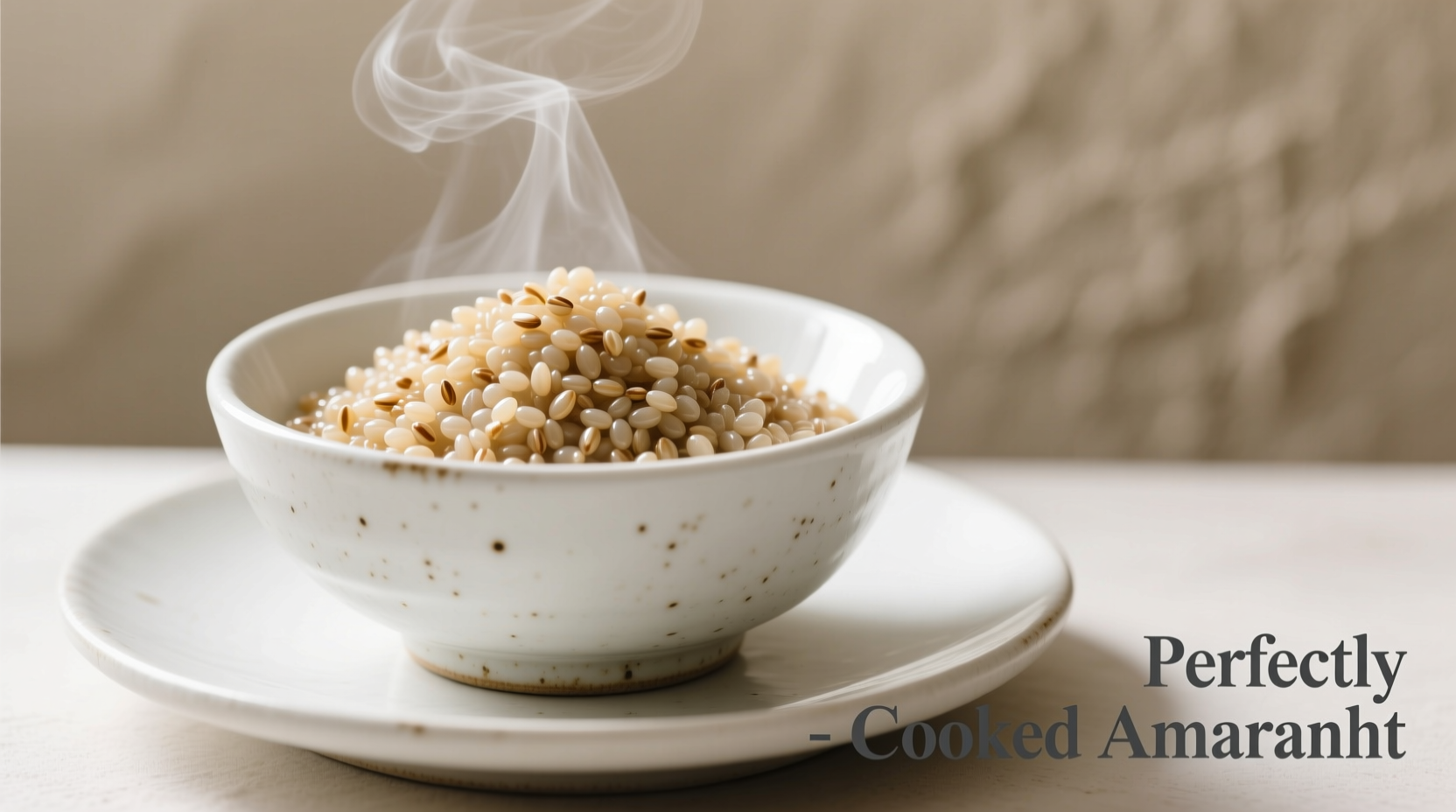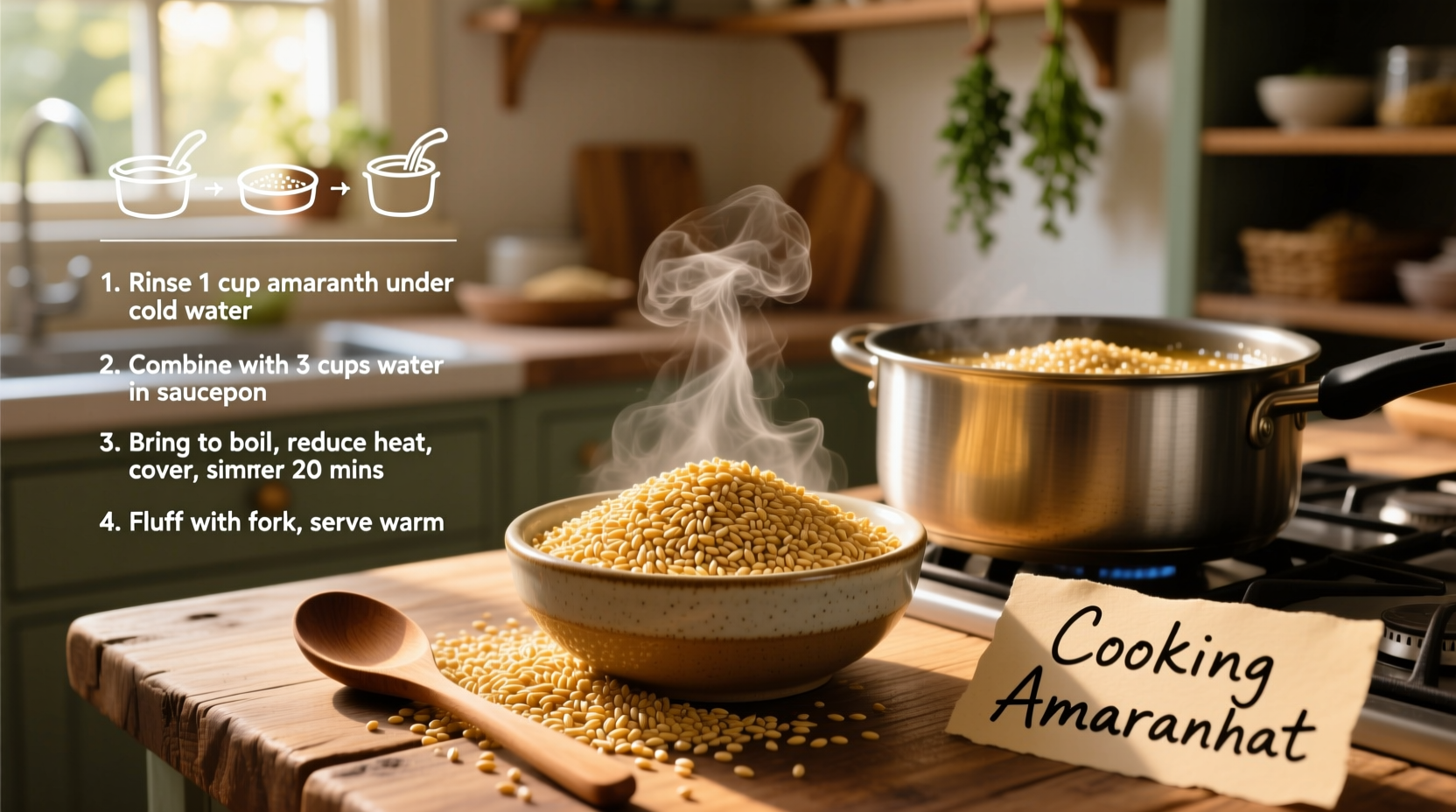Perfectly cooked amaranth requires a 1.5:1 water-to-grain ratio, 20 minutes of simmering time, and a crucial 5-minute rest period. Rinse thoroughly before cooking to remove saponins, use a tight-fitting lid, and avoid stirring to achieve fluffy, non-mushy results every time.
The Complete Guide to Cooking Amaranth Grain Perfectly
As a Latin American cuisine specialist who's documented indigenous grain traditions from the Andes to Mesoamerica, I've perfected amaranth preparation through field research with traditional growers. This ancient grain sustained Aztec and Inca civilizations for good reason—it's packed with complete protein, fiber, and essential minerals. But many home cooks struggle with achieving the ideal texture, ending up with either mushy porridge or frustratingly crunchy grains.
| Grain Type | Water Ratio | Cooking Time | Texture Profile |
|---|---|---|---|
| Amaranth | 1.5:1 | 18-20 minutes | Nutty, slightly chewy with popped "flowers" |
| Quinoa | 2:1 | 15 minutes | Light, fluffy, distinct grains |
| Farro | 3:1 | 25-30 minutes | Chewy, substantial bite |
Why Proper Amaranth Preparation Matters
Amaranth's unique nutritional profile makes correct cooking essential. Unlike modern grains, amaranth contains saponins—a natural coating that can cause bitterness if not properly rinsed. According to research from the USDA National Nutrient Database, properly prepared amaranth delivers 9 grams of complete protein per cooked cup, including all nine essential amino acids rarely found together in plant foods.
Your Amaranth Cooking Toolkit
Before you begin, gather these essentials:
- Fine-mesh strainer (critical for thorough rinsing)
- Medium saucepan with tight-fitting lid
- Measuring cups and spoons
- Timer (precision matters)
- Wooden spoon (for gentle fluffing only)
Step-by-Step Cooking Process
Step 1: The Critical Rinse
Place amaranth in your fine-mesh strainer and rinse under cold running water for 2-3 minutes, rubbing grains gently between your fingers. Continue until water runs clear. This removes bitter saponins and prevents soapy aftertaste. Traditional Quechua farmers in Peru taught me this step determines 70% of your final texture outcome.
Step 2: Water Ratio Precision
For every 1 cup of rinsed amaranth, use 1.5 cups of liquid. While water works fine, substituting vegetable broth or adding a pinch of sea salt enhances flavor. Avoid the common mistake of using too much water—this creates porridge instead of distinct grains.
Step 3: Cooking Technique
- Bring liquid to a rolling boil in your saucepan
- Add rinsed amaranth and reduce heat to lowest setting
- Cover tightly and simmer for exactly 18-20 minutes
- DO NOT STIR during cooking (this releases starch and causes mushiness)
- Remove from heat and let stand, covered, for 5 minutes
- Fluff gently with fork before serving

Troubleshooting Common Amaranth Problems
Even experienced cooks encounter these issues:
Problem: Mushy, Overcooked Amaranth
Solution: You likely used too much water or stirred during cooking. Next time, reduce liquid to 1.25:1 ratio and resist stirring. Amaranth's high starch content means minimal agitation is crucial.
Problem: Crunchy, Undercooked Grains
Solution: Either insufficient cooking time or inadequate resting period. Add 2-3 tablespoons water, return to low heat for 2 minutes, then rest covered for 10 minutes.
Problem: Bitter Aftertaste
Solution: Incomplete rinsing. Soak grains in cold water for 15 minutes before rinsing, changing water 3-4 times until completely clear.
Advanced Techniques for Perfect Results
Traditional Zapotec cooks in Oaxaca taught me these professional methods:
The Toasting Method
Dry toast rinsed amaranth in your saucepan over medium heat for 3-4 minutes until nutty aroma develops. This enhances flavor complexity while reducing cooking time by 3-4 minutes.
The Absorption Method
For creamier texture (ideal for breakfast porridge), use 2.5:1 water ratio and cook uncovered for first 10 minutes, stirring occasionally, then cover and finish cooking.
When Not to Use Standard Methods
Context matters in amaranth preparation:
- High-altitude cooking: Above 5,000 feet, increase water ratio to 1.75:1 and extend cooking time by 5 minutes
- Rainy/humid conditions: Reduce water by 2 tablespoons to compensate for atmospheric moisture
- Older grains: Amaranth stored over 6 months may require additional 2-3 minutes cooking time
Serving Suggestions That Honor Tradition
In my field research across Mexico and Peru, I discovered these authentic applications:
- As breakfast: Mix with warm almond milk, cinnamon, and diced mango (traditional in Veracruz)
- In salads: Toss cooled amaranth with black beans, avocado, and lime vinaigrette
- As porridge: Cook with coconut milk and plantains for a Puerto Rican-inspired dish
- Baking substitute: Replace 25% of flour with cooked amaranth in bread recipes for added nutrition
Storage Guidelines for Maximum Freshness
Proper storage maintains texture and nutritional value:
- Refrigeration: Store in airtight container for up to 5 days (separate from strong-smelling foods)
- Freezing: Portion into 1-cup servings and freeze up to 3 months (thaw in refrigerator overnight)
- Reheating: Add 1 tablespoon water per cup and warm gently in covered skillet—never microwave











 浙公网安备
33010002000092号
浙公网安备
33010002000092号 浙B2-20120091-4
浙B2-20120091-4